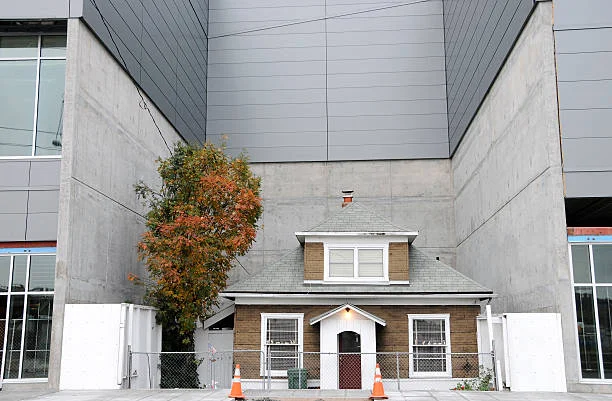Owning a home in Seattle can feel like winning the lottery and pulling your hair out all at once. The views? Unmatched. The neighborhoods? Full of charm and character. But if you’ve ever noticed your floors creaking louder after a rainstorm or found a weird puddle in your basement, you know that Pacific Northwest living comes with its own… quirks. The kind that show up uninvited and make themselves at home.
Whether you’re in a mid-century house on Beacon Hill, a classic Craftsman in Wallingford, or a boxy new build near Green Lake, Seattle homeowners face unique challenges. And unless you’re obsessed with crawl spaces and utility bills, some of those issues go unnoticed until they’re big, expensive, and annoying. So let’s talk about what might be slowly working against you from the inside out—and what to do about it.
Rain Doesn’t Just Fall—It Finds a Way In
Seattle’s moody weather might be great for cozy weekends and green gardens, but all that drizzle and damp air can be a slow wrecking ball for your home. Roofs here don’t last as long as they do in drier places, even when you’ve done “everything right.” Gutters clog faster. Moss decides your shingles are an Airbnb. And let’s not even start on the damage a slow leak can do behind your walls—especially if your insulation’s old or patchy.
Foundations in older homes can also start to shift if too much water seeps into the soil around them. You might see tiny cracks at first, then one day realize your front door sticks every time it rains. It’s not your imagination. Water wants in. And it’s usually patient enough to wait you out.
What helps? Taking a weekend once or twice a year to walk your property, even in the rain. Look at the slope of the land, see where the water is pooling, and check if the base of your house feels damp. It’s not glamorous work, but it’s better than ignoring it and paying thousands later.
Uninvited Guests with More Legs Than You’d Like
Seattle isn’t exactly teeming with rats the way some bigger cities are, but don’t let that fool you. Between the moisture, the aging housing stock, and the endless pockets of greenery, your home could be offering up the perfect conditions for all sorts of unwanted roommates.
That little scratching sound you thought was just the house settling? It might have fur. Or wings. Or a thousand tiny legs. And if you’ve noticed a sudden uptick in weird droppings or tiny holes near your baseboards, you’re probably not imagining things.
The good news is that Seattle pest control services aren’t just for the big, dramatic infestations you see in horror movies. A lot of companies here focus on prevention—sealing up gaps, trimming back overgrown shrubs, and installing subtle but effective barriers. This isn’t about overkill. It’s about being smarter than whatever’s trying to sneak in through your crawl space.
That Musty Smell in the Basement Has a Name: Mold
A weird thing about mold in Seattle is that you might not even see it before you smell it. That damp, sour, almost sweet scent that seems to live in your laundry room or lower-level bathroom? That’s mold saying hi.
It thrives in places where moisture lingers and airflow isn’t great. So even if you keep your house tidy and clean, mold can creep in after just one leaky window or slow-draining tub. It’s sneaky like that. And the longer it goes unnoticed, the harder (and pricier) it is to get rid of.
What helps is checking for condensation around windows, especially in winter. Fans should be running during and after showers. If your washer or dryer is in a basement or garage, leave the door open when not in use. Sometimes it’s the smallest, most boring changes that make the biggest difference in keeping your home dry and your air breathable.
Don’t stop here—take a look at what else we’ve got for you!
Why Even New Homes in Seattle Need Attention
There’s a bit of a myth that buying new construction means you can just “set it and forget it.” The truth? Some newer homes in Seattle were built quickly during boom times, with modern materials that don’t always stand up to our constant damp and temperature swings.
We’ve all seen those townhomes with the trendy black windows and crisp lines—but behind those modern finishes, issues can still lurk. Poor sealing, cheap siding, and rushed ventilation systems all mean that even a home built in the last five years could already be experiencing wear and tear.
And here’s the thing—Seattle’s high housing costs mean people are investing serious money into homes that might not be as sturdy as they look. Whether you’re buying or already own, it’s worth getting a second opinion. A good home inspector or local contractor can often spot things you’d never think to look for, like improperly vented attics or weird gaps in exterior walls that let in cold air and pests.
The Little Things That Get You in the Long Run
Living in Seattle comes with these tiny, slow-creeping issues that love to add up over time. A little rust here. A drawer that sticks more than it used to. That weird bubbling paint in the corner of your ceiling. Nothing worth a full-blown panic, but together, these things quietly lower the value of your home—and your enjoyment of living in it.
The trick is to deal with stuff when it’s still small. Think of your home like you’d think of a car: you wouldn’t wait until the brakes failed to get them checked. The same thing goes for your roof, your siding, and yes, even your windows. A little proactivity goes a long way, especially in a city where nature is always pushing back just a bit.
A lot of Seattle homeowners are good at living with “quirky” features, but quirky can cross the line into dangerous—or just expensive—if you’re not paying attention. Don’t wait until the damage is big enough to notice from the street.
What You Can Take Away from All This
If you live in Seattle and you own your home, staying ahead of the small stuff is the only way to avoid the big stuff. The climate isn’t forgiving, and the maintenance never really stops, but it’s worth it to protect the home you worked hard to buy. A little knowledge, a few weekends of effort each year, and the right local services can keep your house solid, dry, and—most importantly—yours.
You don’t have to become a handyman overnight. But you do have to stay curious, stay watchful, and remember that your house is more alive than you think. And like anything that’s alive, it needs attention, especially when the rain never really leaves.
Explore related articles to deepen your understanding before you go.







